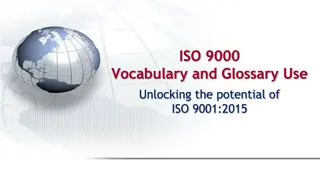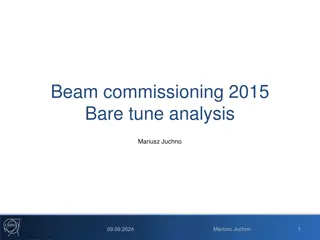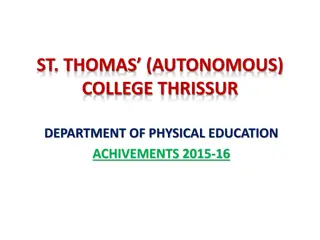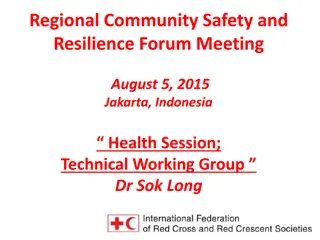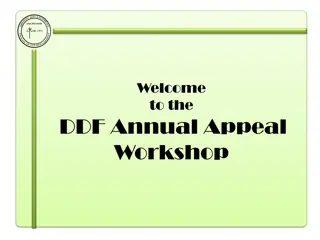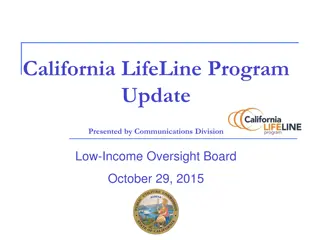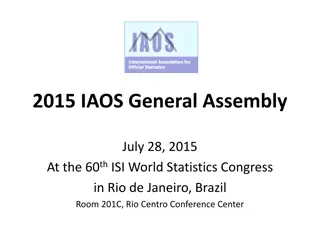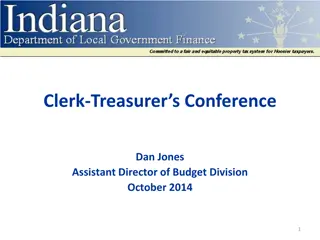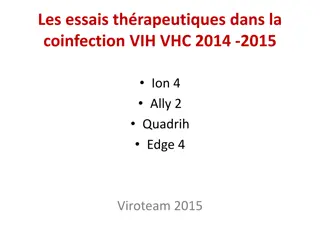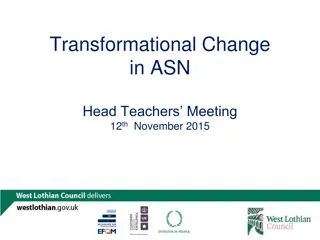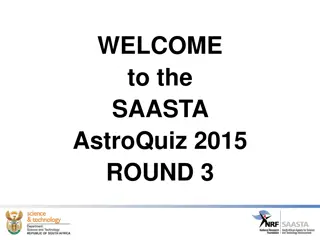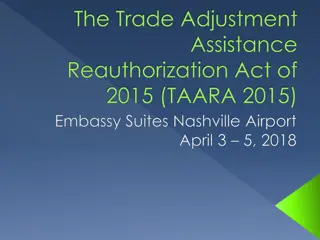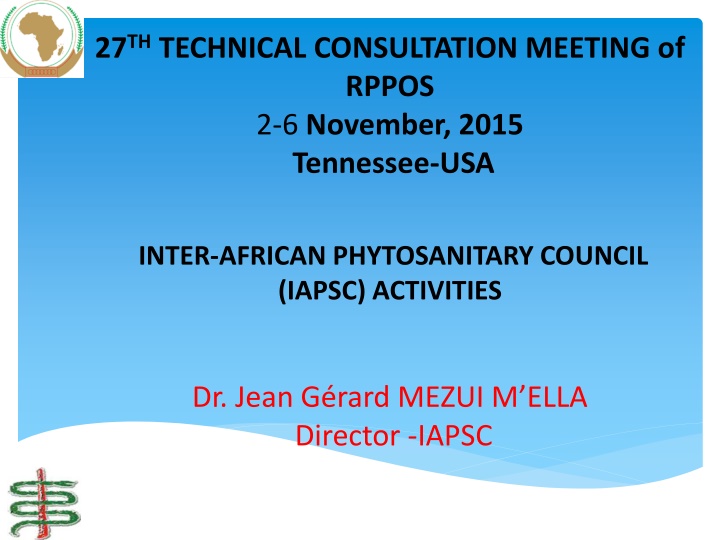
Regional Plant Protection Organization of Africa - IAPSC Overview
Learn about the Regional Plant Protection Organization of Africa (IAPSC), its vision, missions, and goals. Discover the impact focus areas, key stakeholders, and activities of IAPSC, aimed at improving plant health systems and reducing pest risks in Africa. Gain insights into the roles of National Plant Protection Organizations (NPPOs) and the organization's strategic plan for sustainable plant health systems. Stay informed about emerging pests in Africa and the efforts towards better livelihoods, enhanced trade, and biodiversity preservation.
Download Presentation

Please find below an Image/Link to download the presentation.
The content on the website is provided AS IS for your information and personal use only. It may not be sold, licensed, or shared on other websites without obtaining consent from the author. If you encounter any issues during the download, it is possible that the publisher has removed the file from their server.
You are allowed to download the files provided on this website for personal or commercial use, subject to the condition that they are used lawfully. All files are the property of their respective owners.
The content on the website is provided AS IS for your information and personal use only. It may not be sold, licensed, or shared on other websites without obtaining consent from the author.
E N D
Presentation Transcript
27THTECHNICAL CONSULTATION MEETING of RPPOS 2-6 November, 2015 Tennessee-USA INTER-AFRICAN PHYTOSANITARY COUNCIL (IAPSC) ACTIVITIES Dr. Jean G rard MEZUI M ELLA Director -IAPSC
OUTLINE Introduction IAPSC`s Vision , Missions and Goal Impact focus areas Key stakeholders of IAPSC IAPSC current structure Roles of IAPSC to achieve desired results Roles of NPPOs IAPSC s activities for 2015 Emerging/re-emerging pests in Africa Conclusion
INTRODUCTION IAPSC is the Regional Plant Protection Organization of the International Plant Protection Convention (IPPC) in charge of Africa (54 countries). It is also a Specialized Technical Office of the Department of Rural Economy and Agriculture (DREA) of the African Union Commission (AUC) in charge of plant protection. It plays an important role in the cooperative endeavor to implement, at continental level, the IPPC`s functions and promote good agricultural and pesticides management practices. It promotes the increase of agricultural production and market access.
VISION , MISSIONS AND GOAL (STRATEGIC PLAN 2014-2023) VISION: Robust plant health systems and reduced pest risks contribute to better livelihoods, enhanced trade and biodiversity preservation in Africa. Mission: To develop, promote and coordinate sustainable plant health systems among continental, regional and national actors for increased agricultural production and market access Goal: Continental plant health management systems improved by 2023
IMPACT FOCUS AREA 1: Enhanced compliance with International Phytosanitary Standards and regulations Outcome: ISPMs effectively implemented Outputs: - NPPOs structures amended; - ISPMS implemented and coordinated; - African countries' contribution to standards setting improved; - National plant quarantine services operational according to standards.
IMPACT FOCUS AREA 2: Mitigation of impacts and risks of pandemic and exotic invasive plant pest species on livelihoods and biodiversity in Africa Outcome: The impacts and risks of pandemic and exotic invasive plant pest on livelihoods and biodiversity in Africa mitigated Outputs: - Enabling continental environment for effective management of pests and pesticides created - functional trans boundary pest early warning and rapid response systems established - effective continental plant health information system established and in use.
I IMPACT FOCUS AREA 3: Promotion of human capacity development Outcome: Adequate plant health personnel at all levels in the position to effectively perform better services Outputs: - certified master trainers( male and female) in place at the local, national and regional levels - training curricula and facilities improved and upgraded.
IMPACT FOCUS AREA 4: Sensitization of policy and decision makers of the contribution of improved and strengthened plant pest management to the economy in Africa. Outcome: Political support and financial investments in the plant health sector increased Outputs: - Effective communication strategies established - efficient resource mobilization mechanism in place - functional partnerships among plant protection stakeholders established.
KEY STAKEHOLDERS OF IAPSC AU 54 member states and their National Plant Protection Organizations ( NPPOs) 8 Regional Economic Communities ( RECs) International Plant Protection Convention Secretariat Food and Agriculture Organization (FAO) IITA, CABI, WTO/STDF, NGOs, Agro-industries and trade institutions, farmers organizations Agricultural institutions of learning etc.
IAPSC CURRENT STRUCTURE General Assembly Steering Committee Directorate-AU-IAPSC 4 sections: - Phytopathology -Entomology -Administration and Finance - Documentation
Roles of IAPSC to achieve desired results In addition of its roles as described in article IX of the IPPC Convention IAPSC does the following: Facilitation and support in the process of elaboration of harmonized policies, standards procedures and guidelines; facilitation and articulation of common African positions on aspects of phytosanitary matters in international fora; promotion of technical leadership and advisory services to member states; sensitization and advocacy on issues relevant for continental plant protection data collection, management and exchange of information on pests
Roles of NPPOs The NPPOs should: take ownership of the strategy implementation process and should create awareness on plant health issues at government level; align AU-IAPSC strategic plan at national policies as part of the priorities; be committed to cooperate with IAPSC in the process of strategy implementation; adapt their activities , roles and functions in accordance with the AU-IAPSC strategy.
Review of IAPSC` activities for 2015 IAPSC`s activities approved to be funded in 2015 include: Technical preparatory meeting for the CPM10 session; Participation of IAPSC to the CPM10 , the WTO-SPS committee meeting and 27thTechnical consultation meeting among RPPOs; Workshop with RECs and member states on safe use of chemical pesticides on agriculture; Workshop with RECs and member states to strengthen their knowledge and facilitate the implementation of Early Detection and Rapid Response for pests; Workshop on strengthening capacity on invasive Alien plants, risk assessment and management; Continental member states consultation workshop on 2015 draft ISPMs of IPPC
IAPSC` activities for 2015 cont.'s On the above mentioned approved activities only a few were funded and effectively implemented. They include: A preparatory technical meeting for CPM10 was held in Addis Ababa, Ethiopia on February 26-28, 2015; IAPSC took part to the CPM10 meeting on March 16- 20,2015 and will participated to the 27thTechnical Consultation meeting among RPPOs in the USA; IAPSC held its 9thSteering Committee and 26thGeneral Assembly on June 1-5, 2015; The Workshop on safe use chemical pesticides on Agriculture is scheduled to take place in December 2015. Beside the activities on program budget, IAPSC is involved in the Australia Africa Plant Biosecurity Partnership
Emerging/re-emerging pests in Africa Emerging /re-emerging Pests in Africa include: Fruit flies (Bactrocera invadens) Cassava mosaic disease Cassava brown streak Banana bacterial wilt Banana wilt ( Banana panama disease) Banana bunchy top disease Leaf miner (Tuta absoluta) and Maize Lethal Necrosis disease
CONCLUSION The IAPSC has suffered a considerable drop in the released of its program budget for 2015. However the endorsement of its strategic plan 2014-2023 by the Conference of Ministers of Agriculture, Livestock and Environment in October 2015 will encourage member states to take ownership of the strategy and include it their respective agricultural National Investment plans . It is also unfortunate that IAPSC was unable to organize as usual, the IPPC workshop to review the 2015 draft ISPMs and specifications; due to the lack of funds.

